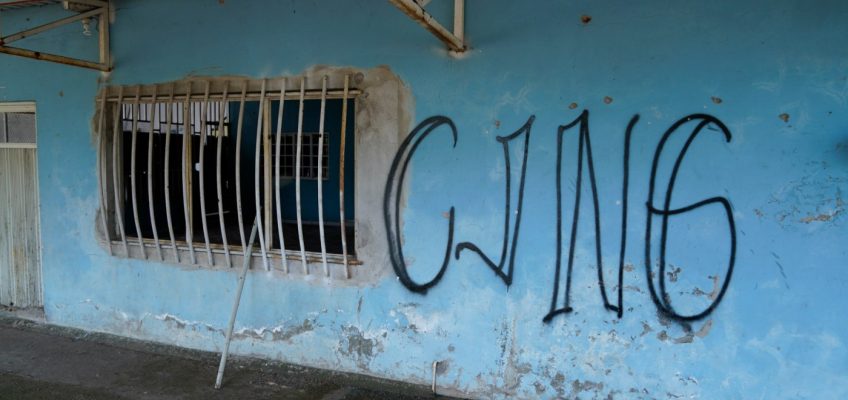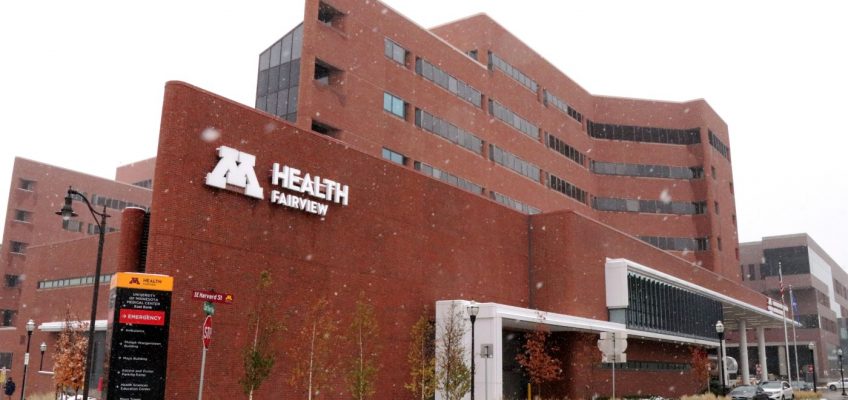The dancer’s reputation preceded her.
Dancer Toni Pierce performs in Jawole Willa Jo Zollar’s ballet “Shelter” in 1992. Photograph by Jack Mitchell; image copyright Alvin Ailey Dance Foundation, Inc. and Smithsonian National Museum of African American History and Culture. All rights reserved.
While a dance student at the Ailey School in New York, Arcell Cabuag was flipping through a book of Jack Mitchell photos of Alvin Ailey American Dance Theater performances. In one image, from 1992’s “Shelter,” a female dancer stares intensely at the camera, at the height of a split jump — powerful legs extended, hands in fists, wavy black hair defying gravity.
“I’d known about her, like, ‘Who is this dancer?’” he said. “My roommates and I talked about her all the time. We were huge fans. One day, I saw her walk into the building and was like, ‘Oh my god, that’s Toni Pierce-Sands.’”
After growing up in St. Paul and taking classes at Minnesota Dance Theatre, Pierce-Sands moved to New York to join Ailey’s dance company. For a decade, she danced professionally in one of the country’s most prestigious modern dance companies, performing both in New York and on tour around the world.
In 2005, after returning to Minnesota, she and husband Uri Sands launched TU Dance in St. Paul. And over the past 20 years, as TU Dance has reached some 4,000 students, Pierce-Sands became a cornerstone of the local dance and art community and a personal mentor to many.
Pierce-Sands, 63, died of cancer Nov. 25.
“Toni created at TU Dance this community for young people that was full of belonging and rigor, and it was always there for the dance but there for the community even more,” said Neeraj Mehta, whose son danced at TU Dance for about a decade; Mehta now serves as the organization’s board chair. “You could tell Toni set a high standard for what it means to be a dancer and a human.”
Toni Pierce-Sands, Founder and Artistic Director of TU Dance, keeps an eye on her class of high school junior and seniors dancers at the TU Dance Studio in St. Paul on Tuesday, Feb. 25, 2025. (John Autey / Pioneer Press)
‘She had a hunger and a discipline’
Talk to anyone who knew Pierce-Sands and they’d tell you: She was intense, and she knew it. If she was going to do something, she was going to do it with full-strength commitment and authenticity — and she pushed those around her to do the same.
As a dancer at Ailey, she was “Fierce Pierce.”
As an instructor for a time at the University of Minnesota and across two decades leading TU Dance, professional collaborators and former students describe a generous mentor who would stop at nothing to help dancers reach the potential she saw in them — a level of achievement that, often, was higher than what dancers had even thought possible for themselves.
This was certainly the case for Yusha-Marie Sorzano. Pierce-Sands was a guest instructor when Sorzano was a high-schooler studying at Dance Theatre of Harlem. Sorzano, now a noted dancer and choreographer, has since performed alongside and created work for some of the nation’s top modern dance companies including, earlier this year, TU Dance.
“I was, to keep it simple, in awe of her majesty, grace and compassion,” Sorzano said. “Her love for teaching, for people, was unparalleled. She poured into you when you were doubtful of pouring into yourself.”
In the dance studio, Pierce-Sands had a watchful eye, a wry smile and a loud voice. It wasn’t perfectionism she was after, exactly, but precision and purposefulness. Mistakes, as learning opportunities, were OK. Half-hearted effort was not.
“I’m quoting her: ‘If you’re going to make a mistake in dance, make a big mistake,’” said longtime friend Abdo Sayegh Rodriguez, who first took classes from Pierce-Sands as a company member at Minnesota Dance Theatre in the early 2000s and now serves as TU Dance’s executive director. “If you moved the wrong way, she would tell you that’s the wrong way, but also expect that you go the wrong way better than anybody else.”
Pierce-Sands’ years with the Alvin Ailey American Dance Theater — from the time she graduated high school into her early 30s — was a crucible in which this rigorous approach was forged, she recalled earlier this year when TU Dance marked its 20th anniversary.
Under Ailey’s direction, she said in March, “the way they talked, it’s ‘5, 6, 7, 8 —’ and you either hit it or you don’t.”
Mehta, whose son Ezra began taking classes at TU Dance at age 9, recalls once asking Pierce-Sands what separates, essentially, a dance student who hits it from one who doesn’t.
Her answer: Hunger and discipline.
“She said, you can be disciplined; you can come work every day, but you also have to have a hunger. You have to have something inside of you that is almost desperate for something more, that’s waking up every day saying, ‘I’m going for this.’” Mehta recalled. “In reflection, I think that’s exactly what she had. She had a hunger and a discipline that was ferocious.”
Ezra Mehta, now 19, is pursuing a dance degree at SUNY Purchase.
“There’s nothing else like taking class from Toni,” Ezra Mehta said. “She will get on your back. She doesn’t play. She doesn’t sugarcoat it … and she created this motivation in me, with that intensity, that kept me personally wanting to get it right so she could see that I’m progressing.”
Toni Pierce-Sands, Founder and Artistic Director of TU Dance, works with high school junior and senior dance students during a class at the TU Dance Studio in St. Paul on Tuesday, Feb. 25, 2025. (John Autey / Pioneer Press)
‘Nothing to prove, only to share’
Coming of age at the Alvin Ailey American Dance Theater, Pierce-Sands recalled earlier this year, “we developed as dancers and hoped to God that we developed as human beings along the way.”
That was effective — thrilling, even — for her at the time. But in a changed world today, she came to realize, young dancers need a different approach. As an instructor, Pierce-Sands didn’t just want her dancers to execute the choreography as if reciting a book: She wanted them, through movement, to find their own individual voices and places in their communities.
Before every TU Dance show, Pierce-Sands would have her dancers join in a mantra from choreographer Ulysses Dove: “Nothing to prove, only to share.”
“She would remind me to move how my body moves and find a way to move with that, rather than trying to dance like anyone else or be something that I’m not,” said Darrius Strong, who studied under Pierce-Sands at the University of Minnesota.
Arcell Cabuag, the one-time Ailey School student who saw Pierce-Sands in the book of photos, is now associate artistic director of Evidence, A Dance Company, a Brooklyn-based organization led by artistic director Ronald K. Brown. As a respected choreographer and friend of Pierce-Sands’, Brown has been commissioned to create works for Pierce-Sands as a dancer herself and for TU Dance.
“She was such a gorgeous dancer, and generous onstage,” Brown said. “All the gifts she had, she was giving onstage.”
This translated offstage, too. Strong now leads the local dance company STRONGmovement, and said his approach to teaching comes directly from Pierce-Sands.
“When I would get discouraged, she would (help me) find the strength within me that I hadn’t found yet,” he said. “As an instructor, how do I find ways to make sure the way I’m teaching goes beyond just phrases but empowers the dancers I’m working with, so that when they leave my classroom, they can do and be things they might not have thought they could?”
As for TU Dance, the organization plans a celebration of life for Pierce-Sands in the new year.
“For the board and the staff and parents, we are all committed to ensuring, with that same rigor and discipline and hunger that she demanded, that TU Dance exists for the next 20 years,” board chair Neeraj Mehta said. “That’s our commitment to Toni.”
Pierce-Sands is survived by husband Uri Sands, son Tre Odums and other family members. Funeral arrangements are not public.
Related Articles
As part of touring ensemble, two St. Paul skaters are set to perform in ‘Disney on Ice’ this weekend
Holiday arts and entertainment: ‘White Christmas,’ Dickens and the Grinch lead the holiday stage offerings
History and fantasy blend in ‘Rollicking! A Winter Carnival Musical’
Q&A: Prince musicians Bobby Z and Morris Hayes discuss new ‘Purple Rain’ musical
Review: Heart of Children’s Theatre’s ‘Grinch’ grows bigger by the year




